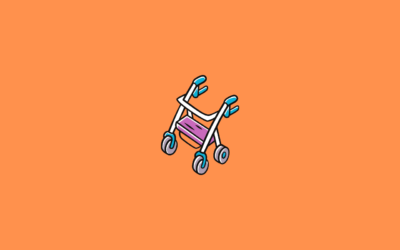Key Takeaways For Bathroom Mobility Aid
Consider User’s Needs: Evaluate the individual’s health, injuries, and physical limitations when choosing a bathroom mobility aid. Take into account the bathroom layout and potential hazards.
Budget and Long-Term Value: Balance budget considerations with the long-term value of the product. While a higher-quality toilet mobility aid may have upfront costs, it could save money in the long run.
Personalized Bathing Solutions: Explore alternatives to walk-in tubs, such as handheld showerheads, shower cubicles, bath lifts, and toilet risers, based on the specific needs and mobility of the user. Consult a doctor or mobility expert for tailored advice.
Top Bathroom Mobility Aids
With so many options available, finding the right toilet mobility aid can be a time-consuming process. Some considerations are essential while shopping for a bathroom mobility aid. Learn more in our Bathroom Mobility Aid Buying Guide.
Before making a purchase, it’s essential to consider the individual using the bathroom aid. Please consider their current health condition, any injuries they may have sustained, and any physical limitations they face. Additionally, the bathroom layout should be assessed, and potential hazards that could affect safety should be identified. Finally, evaluate your budget and how long you anticipate needing the bathroom mobility aid. While it’s essential to choose a product that fits your budget, also consider its long-term value. Investing in a higher-quality toilet mobility aid may have a higher upfront cost, but it could save you money in the long run by reducing the need for replacements.
What Can Help Me Get In And Out Of The Bathtub?
To make getting in and out of the tub less hassle, you may use one of the following bathroom accessibility devices:
- Wall-mounted grab bars may help the elderly and others with mobility issues in the bathroom. They can also benefit people with trouble walking or maintaining balance.
- You may use a shower stool or chair while you bathe. They may be useful for people with trouble standing or mobility restrictions.
- You may install a bath lift in a bathtub to make getting in and out of the water more accessible for those who have trouble bending over and risk hurting their backs. Those with problems standing or who are restricted in their mobility may find these devices, which are often operated through remote control, helpful.
- Some people use toilet risers to make getting on and off the toilet seat easier. Those with trouble bending or reaching the toilet seat may benefit significantly from this assistance.
When choosing a gadget to help get in and out of the tub, it’s essential to consider the user’s demands and level of mobility. A doctor or mobility expert’s opinion might help narrow down the options.
What Is An Alternative To A Walk In Tub?
Instead of stepping over the side, you may stroll into a walk-in tub. Alternatives to a walk-in bathtub include
- Because you can hold it in one hand, a handheld showerhead is convenient whether you’re seated on a shower chair. It is helpful for those who have problems standing or are restricted in their mobility to use them.
- A dedicated shower cubicle may be a better option for people with difficulty stepping in and out of a walk-in tub. Showers designed for people with disabilities may include built-in seats or chairs.
- To avoid bending over and straining one’s back, you may build a bath lift to help you enter and exit the water. These gadgets, which are often controlled remotely, might be very useful for those who have problems standing or who are limited in their movement.
When searching for an alternative to a walk-in tub, the user’s preferences and physical constraints must be considered. To narrow down the choices, a doctor or mobility specialist may be helpful.
What Is The Best Way For a Senior To Get Out Of A Bathtub?
When deciding how best to assist an older person in getting out of the tub, it’s crucial to consider their specific needs and abilities. Below are a few examples of such approaches:
- If you need help getting into or out of the shower or bath, install a grab bar (attached to the bathroom wall) near the fixture. Grab bars are helpful for older adults with problems walking or keeping their balance.
- Utilise a bath lift, a device you can fit in the tub to help you enter and exit the water. These chairs, which are often powered via remote control, may be quite helpful for older adults who have trouble standing or moving about.
- To safely enter and exit a shower or bathtub, utilise a transition bench. A seat and backrest on one side of the tub or shower facilitate the transfer from a wheelchair or other mobility equipment, making it more accessible to the elderly.
- Get a shower chair and a seat placed in the shower or tub and move about as needed. They might be quite helpful for the elderly who have problems standing or moving about.
When selecting how to get out of the tub, it is crucial to consider the senior’s needs and abilities. To narrow down the choices, it may be helpful to consult a doctor or mobility specialist.
What Is A Bathtub Lift?
You may install a motorised lift for people who need help getting in and out of the tub. The user or a carer may control a chair or bench attached to a motorised base. After the lift is activated, the chair or bench lowers into the tub, allowing the user to sit down and be lifted back up when they are through bathing. Some models of bathtub lifts have extra safety measures like a seatbelt or an adjustable backrest to make the ride even more comfortable and safe for the user. A bathtub lift may be helpful for those who have difficulty getting in and out of the tub owing to age, disability, or other circumstances.
How Do You Shower With Limited Mobility?
Mobility-challenged people may choose from many showering options designed with them in mind.
- Use a shower seat like a bench or chair to provide a stable and comfortable perch while cleaning up.
- Installation of Grab Bars on the inside walls of the shower gives a secure handhold for both standing and sitting.
- Consider a handheld showerhead if you have problems washing every area of your body.
- A shower stool provides a small, portable seat that can be placed anywhere inside the shower. It allows you to sit down while in the shower.
- If you want to reduce your shower time, choose a soap or shower gel that doesn’t need lathering and rinsing.
Those who have trouble moving around should be especially cautious in the shower. If you don’t want to hurt yourself by tripping in the shower, use the handrails, take it easy on your steps, and clean up the floor. Additionally, a non-slip mat placed in the shower might lessen the likelihood of accidents.
How Do People Who Can’t Walk Use The Bathroom?
Those who use a wheelchair nevertheless have options for meeting their bathroom needs whenever they arise.
- If you have difficulty getting on and off the toilet, a toilet riser or frame might help. As the name implies, these aids are placed around the loo to help with stability and toilet transfers.
- Use a bedpan or urinal if you need to go: If you cannot get to the bathroom, you may use a bedpan or urinal instead.
- Use a commode chair, which is effectively a portable toilet seat that you can put up either in addition to or in place of a standard toilet. Those who are bedridden or unable to move about independently often utilise it.
- Get in the habit of using a bidet, a water gadget explicitly made for cleaning the genital and auricular areas after using the bathroom. A bidet with a seat may be used by persons who cannot stand for long periods.
Bathrooms should be accessible to those with mobility impairments for their safety and convenience. Having a caretaker or family member nearby is also helpful if you need assistance. You may also use non-slip carpets and install grab bars.
How Do You Shower When You Can’t Stand?
If you cannot shower while standing, a few options will enable you to do it safely:
- Use a shower seat, such as a bench or chair, to provide a stable and comfortable perch while cleaning up.
- Those unable to stand for long periods may find that a handheld showerhead makes taking a bath much more bearable.
- A shower gel or soap that doesn’t need washing after use may save you time and effort in the morning. It can even cut down on your shower time.
- Invest in a bath lift, a motorised device that assists you in entering and exiting the tub.
- A sponge bath is a more comfortable if you have trouble standing or sitting in the shower due to mobility limitations. After washing your skin with soap and water using a washcloth or sponge, you may rinse off in a cup or basin of water.
Taking a shower requires extra caution if you have trouble standing alone. If you don’t want to hurt yourself by tripping in the shower, use the handrails, take it easy on your steps, and clean up the floor. Additionally, a non-slip mat placed in the shower might lessen the likelihood of accidents.
What Are Bathroom Aids?
To help persons with mobility issues go to and from the bathroom independently, manufacturers have created various products known as “bathroom aids.” Typical items found in a toilet include
- A raised toilet seat provides additional height and cushioning for those with problems standing or sitting upright.
- Installing a toilet frame or riser around a standard toilet might make it easier for folks with problems sitting on or rising from the bathroom.
- Since a handheld showerhead is attached to a flexible hose, you may direct the water stream anywhere you choose on your body.
- There should be a comfortable and secure place to sit while people wait their turn in the shower; shower seats or benches may offer that.
- Sturdy grab bars are regularly installed in public restrooms to give users something solid to hold onto while getting up from a seat or standing up.
- In moist areas like restrooms, where slips and falls are prevalent, non-slip flooring is a welcome addition.
For those who are disabled and unable to use the toilet alone, having access to bathroom assistance may be a lifeline.
Which Are The Best Bathroom Accessories?
If you’re concerned about cleanliness and want the best bathroom accessories, your decision will come down to personal preference. Typical fixtures in a home’s lavatory include:
- Towel bars and racks make it simple to hang and stack towels.
- Shower and tub curtains keep water where it belongs and may be used as a decorative element in the bathroom.
- Liquid soap dispensers keep bathroom countertops organised and reduce the need for single-use throwaway bottles.
- Store your toothbrushes upright in a holder to prevent germs from growing on the bristles.
- Bins are a need for every clean and clutter-free bathroom.
- A convenient place to store and display your towels is a must in every bathroom.
Durability, functionality, and aesthetics are all factors to consider when selecting bathroom accessories.
What Assistive Devices Be Used To Help Patients With Toileting?
There are a variety of accessible aids for those who need help in the restroom.
- You may place a raised toilet seat on top of a regular one to make it more accessible for those with limited mobility.
- A frame or riser constructed around the bowl may benefit those who have trouble getting on and off the toilet due to mobility issues.
- If patients cannot get up and move, they may use a bedpan or a urinal instead of going to the toilet.
- A commode chair is an alternative or extra toilet seat that is smaller, lighter, and more mobile than a standard toilet. Bedridden or otherwise disabled individuals may need assistance going to and from the restroom.
- Some individuals like to use a bidet after they have used the restroom so that they may clean their genital and auricular regions. Persons unable to stand for extended periods would appreciate the added comfort of a bidet with a built-in seat.
Before settling on a toileting aid, it’s crucial to consider the patient’s specific requirements and present level of capability. A physician or occupational therapist may assist a patient in deciding which aid will be most useful to them.
Which Type Of Bath Is Best For Relieving Joint Pain For A Patient With Arthritis?
Many people with arthritis have found that taking a bath relieves joint pain.
- A hot shower or bath may do wonders for soothing aching muscles and loosen tight joints.
- A soak in Epsom salts, rich in magnesium, is a viable treatment for inflammation and pain. An Epsom salt bath is a wonderful remedy for inflammation and joint discomfort.
- Essential oils with anti-inflammatory and pain-relieving effects, such as frankincense, ginger, and turmeric, may be used to create an aromatherapy bath.
- Because of their anti-inflammatory and pain-relieving characteristics, herbs like chamomile, calendula, and comfrey are ideal for a herbal bath to alleviate joint discomfort.
- Some individuals get relief from joint pain by alternating hot and cold baths. This practice may help decrease inflammation and improve blood flow, contributing to discomfort.
If you’re experiencing joint discomfort, it’s important to see your doctor before trying anything new. Depending on the patient’s arthritis type, pain level, and other considerations, they may recommend a course of therapy.












